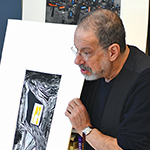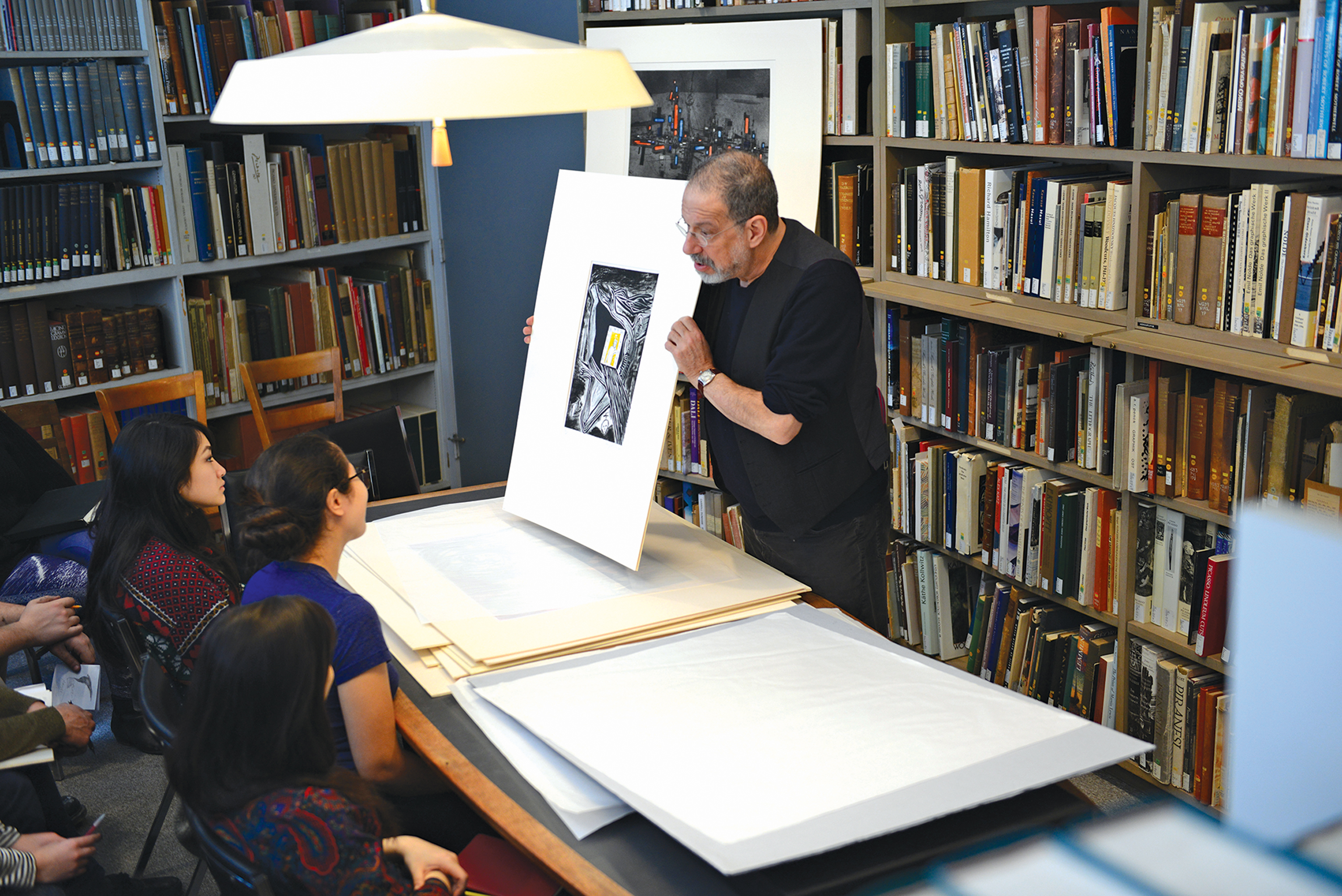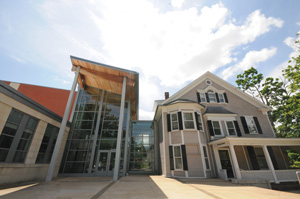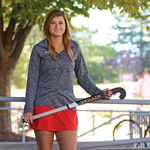FROM THE COLLECTIONS: TEACHING FROM THE BREADTH AND DEPTH OF THE DAVISON ART CENTER


The Davison Art Center’s holdings include 18,000 prints from the Renaissance to the present and approximately 6,000 photographs. The DAC is recognized among print and photography curators as a superb collection, notes curator Clare Rogan.
Monday afternoon at the Davison Art Center, Professor of Art David Schorr’s printmaking class meets for its weekly session in this year-long course studying printmakers and their work—up close.
“During that time, students view some 600 to 700 original prints and discuss them,” he says. Seated only a few feet from the prints, Schorr regularly calls the students to move in closer to study particular areas of significance that he points out in the print that illustrate key elements in the process. “Here, students only begin to look at some of the greats: We have one meeting on Goya but we have more than 100 Goya prints in the collection, so often a student will, after class, make an appointment with the registrar of the collection and go back in and see more Goyas or see more Rembrandts or more Dürers,” he says, adding, “I named the three real giants of printmaking, but we only scratch the surface of the DAC’s holdings.”
The size of the collection guarantees a point of entry for a wide range of disciplines. “Essentially, we teach classes from all across the university, not just art history and studio art,” Clare Rogan adds, and names a few: “Professor of American Studies Pat Hill brought in her students from her course on the metropolis, and we looked at 19th-century prints in that context. Professor of History Demetrius Eudell examined the photographs and prints from the American Civil War with the students in his sophomore seminar on ‘War and National (Re)formation.’ We typically have an Italian language class that will come in when they are studying the Renaissance.”
Additionally, Rogan teaches several courses that make use of the collection: the history of print, history of photography, and a museum studies seminar for 12 to 15 students, which produces an exhibit in the Davison Art Center after the semester’s completion. In one of the recent museum studies courses, students created the exhibit ReViewing Bodies: Selected American Photographs, 1930–2000, which examined how 20th-century American photographers have represented the body, with topics that included the abstracted or fragmented body, the body and labor, the body and performance, the body in social situations, and the body in pain.
Rogan explains how the process begins: First she selects the period and type of work from which the students will produce a show. Then, after the students examine the whole of that segment of the holdings in the collection, each selects three works that they would like to see included in the show, making a presentation to the class to support their choice. Together, the students define the topics within the show’s theme, and then they return to the collection to find the best works to illustrate those topics. “It’s very much about the process of how do you decide these things, what works together, what looks good together, and what are the points you want to make in producing this coherent, organized, scholarly exhibition.” The students research and write the labels, again presenting them for critique. “It’s different from the usual academic writing they do. This is ‘How do you write labels for a general audience, making key points that are neither obscure nor in convoluted language?’” Additionally, some students give a gallery talk when the show goes up the following semester—“so they see the whole process from start to finish,” Rogan notes.
Schorr adds another lesson the DAC offers students. “They get a sense of what a museum is and what a collection is, and they understand these are stored in the vault under particular conditions. They understand very much that some of these are works on paper that have come down 500 years and require great care and great attention. So while it’s thrilling to see them, the students must understand that they have to act responsibly to make sure that students 500 years from now will be viewing these same works, too.”


